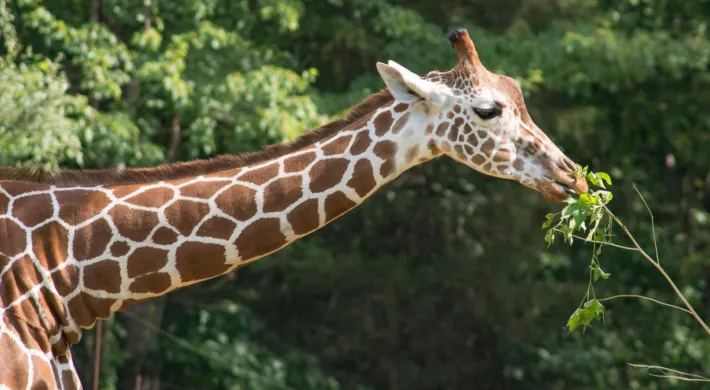Did you know a giraffe's heart may be up to two feet long and weigh 25 pounds? Learn more about giraffes.
Training giraffe enables them to participate in their own care. After building trust through training, the giraffe voluntarily accept vaccinations and allow blood to be drawn. Keepers and veterinarians can also work on their hooves through training.
Conservation biologists have recently raised alarm after noting a 40% decline in Africa’s giraffe population over the past three decades. Moreover, genetic evidence suggest that what was previously thought of as one widespread species may in fact consist of four, or perhaps as many as eight different giraffe species. Several of these new species are at grave risk of extinction if threats persist and thus in urgent need of conservation attention. The North Carolina Zoo is helping to protect giraffes in Tanzania by assessing their population health and helping rangers on the ground reduce poaching. The Zoo is also actively involved in investigating a mysterious skin disease that as of yet has no known cure. You can read more about the Zoo’s work on wild giraffes below, under related resources.
- Very social animals, traveling in large herds made up of all ages and both sexes
- Dominance between males is established through "necking": contests where males slam their heads into the head and neck of an opponent.
- A thick slimy saliva protects their tongue as they wrap it around the thorny branches of the acacia tree to strip its leaves.
- Extinct in Wild (EW)
- Critically Endangered (CR)
- Endangered (EN)
- Vulnerable (VU)
- Near Threatened (NT)
- Least Concern (LC)
- Not Evaluated (NE)





